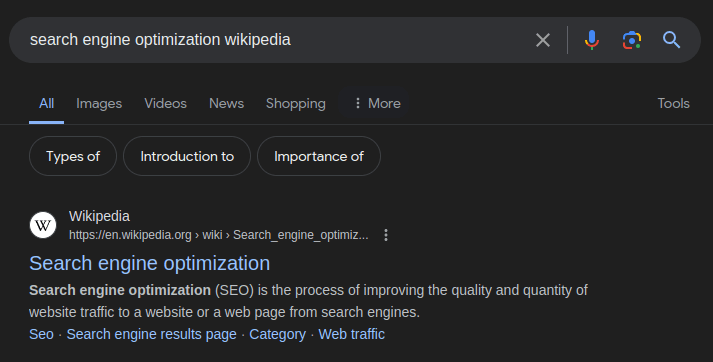Backlink building is the fastest way to build authority for your website, helping you compete for high-traffic keywords with other authoritative websites.
Although there are quite a few ways to build backlinks, one of the most effective techniques is broken backlink building.
Broken links occur when a page that is being linked to no longer exists.
For example, if your blog links to a page on Wikipedia, but the Wikipedia page gets deleted, then your blog’s link to Wikipedia is broken.
This results an error 404, which hurts your blog’s SEO and causes a poor user experience for your readers.

Broken backlink building is therefore the practice of:
- identifying broken links on other people’s websites
- notifying their team of the broken link
- offering your page as a replacement link
This is a win-win; their website solves their broken link issue, and your website earns a new backlink.
How to Find Broken Backlinks
Resource Pages
Most websites have a dedicated page section or separate page to cite their resources, and these are often a gold mine for broken links.
On Google (or any other web search engine), you can use the following tricks to find resource pages related to your target keyword:
- “Keyword” + inurl:resources
- “Keyword” + intitle:links
- “Keyword” + “helpful resources”
- “Keyword” + “useful resources”
Wikipedia Resources
You can manually look for resource pages on Wikipedia — a free open-source encyclopedia. Just look for Wikipedia entries for your target keyword, or topics related to your keyword.


At the bottom of the Wiki entry, you’ll find its resource section:

Although you can replace broken links in this resource section, it would be more effective if you look for broken links for each of the listed websites instead.
This is because links in Wikipedia’s resource section are always no-follow. You might get some backlink traffic through Wiki links, but it won’t really help you gain domain authority.
Use a Broken Link Checker
Although it isn’t completely necessary, using a tool to check broken links will save you a lot of time.
There are a good number of free browser extensions that you can use to find dead links, such as Check My Links for Chrome.
***Please do your own research when installing browser tools***
Cold Outreach
After identifying broken links that you’d like to replace, the next step is to reach out to the website’s team.
This may include contacting their:
- website owner
- webmaster
- customer service team
- marketing team
- SEO specialist
- page author
Check their contact page for emails or contact numbers, otherwise you’ll have to go through their general contact form.
Send them an email to inform them that you’ve found a dead link on their article and to offer your own link as a replacement.
It’s important for you to ensure that your proposed link is relevant to the context of the broken link you’re replacing, otherwise they probably won’t accept your proposal.
If you’re unsure about the context, you can use the waybackmachine to see what the previously linked page looks like.
